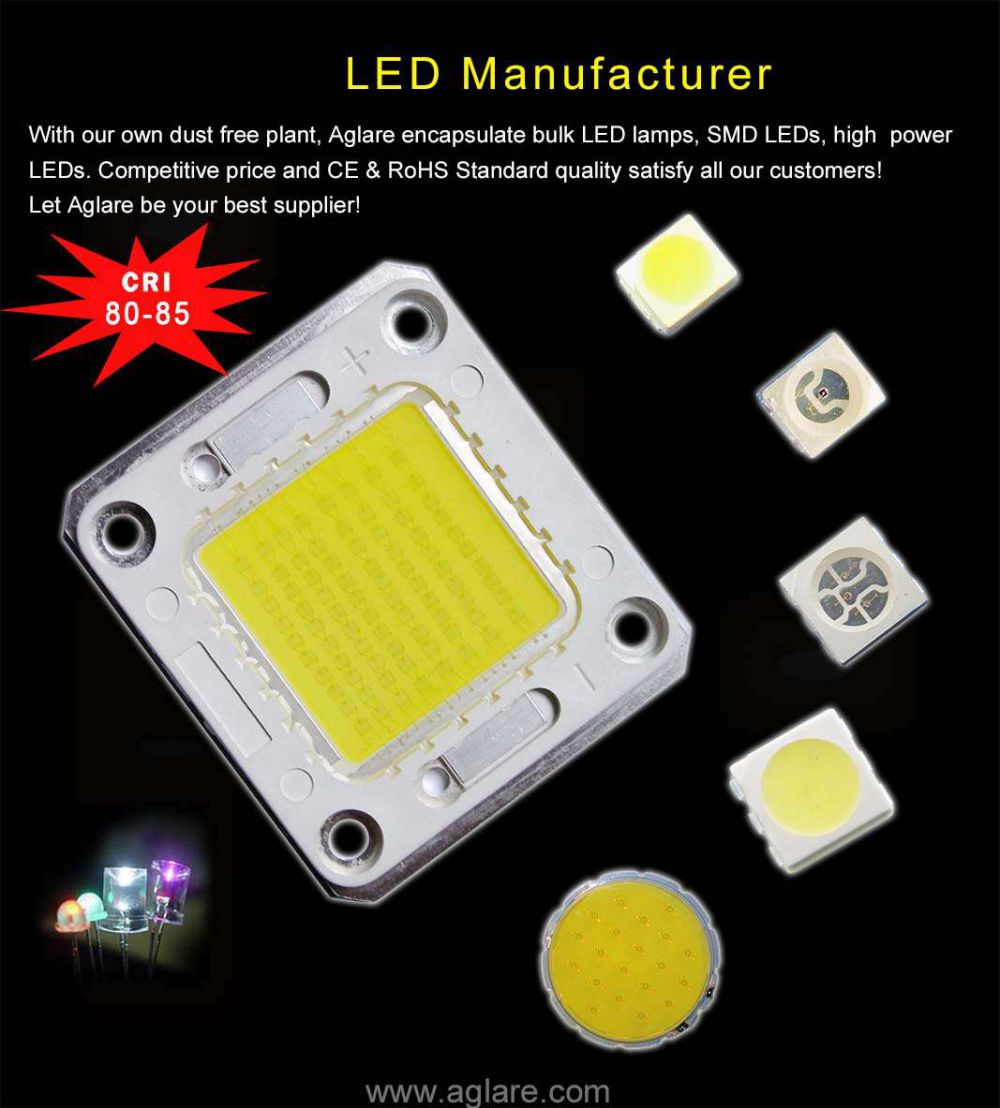
LED Components
LED luminescence principle and characteristics
- date: 2021-12-27
- category: Industry knowledge
- click:
1 LED luminescence principle and characteristics

Led is made of ⅲ - ⅳ group compounds, such as GaAs (gallium arsenide), GaP (gallium phosphide), GaAsP (gallium phosphorus arsenide) and other semiconductors, its core is PN junction. Therefore, it has the i-N characteristics of the general P-N junction, that is, forward guide through, reverse cut-off, breakdown characteristics. In addition, under certain conditions, it also has luminous properties. Under the forward voltage, electrons are injected into P region from N region, and holes are injected into N region from P region. Some of the minority carriers (minority carriers) entering the other region combine with the majority carriers (plurality carriers) and glow,
Assuming that the luminescence occurs in the P region, the injected electrons directly combine with the valence band holes to emit light, or they are captured by the luminescence center and then combine with the holes to emit light. In addition to this luminescent recombination, some electrons are captured by non-luminescent centers (which are near the middle of the conduction band and the dielectric band) and then recombined with the holes, each releasing too little energy to form visible light. The higher the ratio of luminescent compound to non-luminescent compound, the higher the photon efficiency. Because the recombination is luminous in the minority diffusion region, the light is produced only within μm of the surface number close to the PN junction. It has been proved theoretically and practically that the peak wavelength λ is related to the gap width Eg of the semiconductor material in the luminous region, i.e. λ≈1240/Eg (mm).
The unit of Eg is electron volt (eV). If it can produce visible light (wavelength between 380nm violet light and 780nm red light), the Eg of the semiconductor material should be between 3.26 eV and 1.63eV. The wavelength of light longer than red light is infrared. At present, there are infrared, red, yellow, green and blue light emitting diodes, but the cost of blue light emitting diodes is very high, the use is not common.
(two) LED characteristics
2. Meaning of limit parameter
(1) Allowable power consumption Pm: the maximum value of the product of the positive DC voltage applied to both ends of the LED and the current flowing through it. Over this value, LED heat, damage.
(2) Maximum forward DC current IFm: indicates the maximum forward DC current allowed. Exceeding this value can damage the diode.
(3) Maximum reverse voltage VRm: Specifies the maximum reverse voltage that can be added. Above this value, the LED may be broken down and damaged.
(4) Working environment TOPM: the ambient temperature range in which the led can work normally. Below or above this temperature range, leds will not work properly and their efficiency will be greatly reduced.
